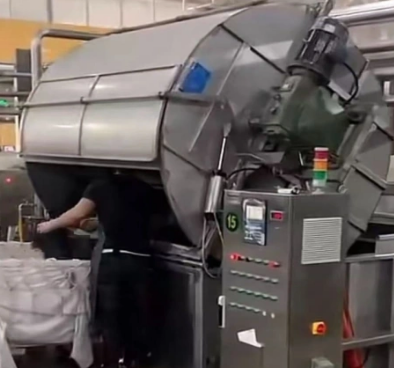Introduction Dyeing Machine is an essential equipment for dyeing textiles and other materials. This article discusses the working principle of the Dyeing Machine and its pros and cons in detail. Working Principle A Dyeing Machine works by immersing the material to be dyed in a liquid dye solution inside a closed vessel. The vessel is then heated to a specific temperature, which helps the dye to penetrate the fabric. The machine then agitates the material, ensuring that the dye solution is uniformly distributed, resulting in uniformly dyed fabric. The agitation can be carried out either mechanically or by pumping the solution through the material. After the dyeing cycle, the solution is drained, and the material is rinsed to remove any excess dye before being dried.

Pros 1. Uniform Dyeing The main advantage of a dyeing machine is its ability to uniformly dye large quantities of material. This ensures consistency in color and quality, making it ideal for large-scale production. 2. Time-Efficient Dyeing Machines are designed to carry out dyeing in a shorter time as compared to traditional dyeing methods. This allows for faster production times, which results in lower cost and higher productivity. 3. Reduced Costs By using a dyeing machine, manufacturers can reduce labor costs as the machine automates most of the dyeing process. The machine's energy efficiency also reduces the overall operating costs. 4. Environment-Friendly Dyeing machines require less water and energy as compared to traditional dyeing methods. This makes them an eco-friendly option, reducing their carbon footprint and making them more sustainable. Cons 1. High Initial Investment Dyeing machines are expensive and require a significant investment upfront. This can be challenging for smaller businesses or those on a tight budget. 2. Lack of Flexibility Dyeing machines are designed to carry out specific dyeing processes limited to the machine's parameters. This limits the flexibility of the process and may not be suitable for specialized dyeing processes. 3. Limited Versatility Dyeing machines are mainly designed for dyeing textiles and may not be suitable for all materials. This is because the machine's parameters, such as temperature and agitation, may affect the material being dyed. Conclusion Dyeing machines are an essential part of textile production processes, providing an efficient and cost-effective way to dye fabrics. However, like all machines, there are pros and cons to consider before investing in one. The advantages of uniform dyeing, time-efficiency, reduced costs, and being eco-friendly make it an attractive option. However, the high initial investment, lack of flexibility, and limited versatility may pose a challenge to some businesses.



